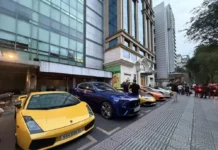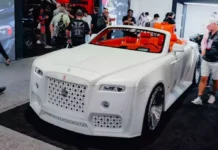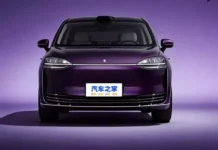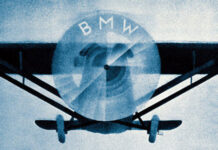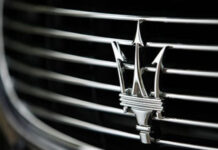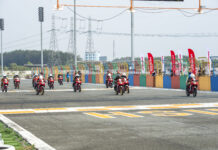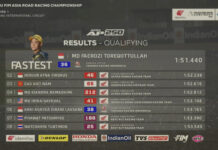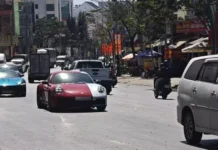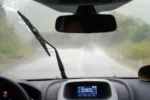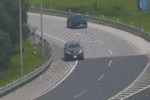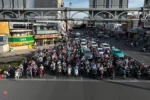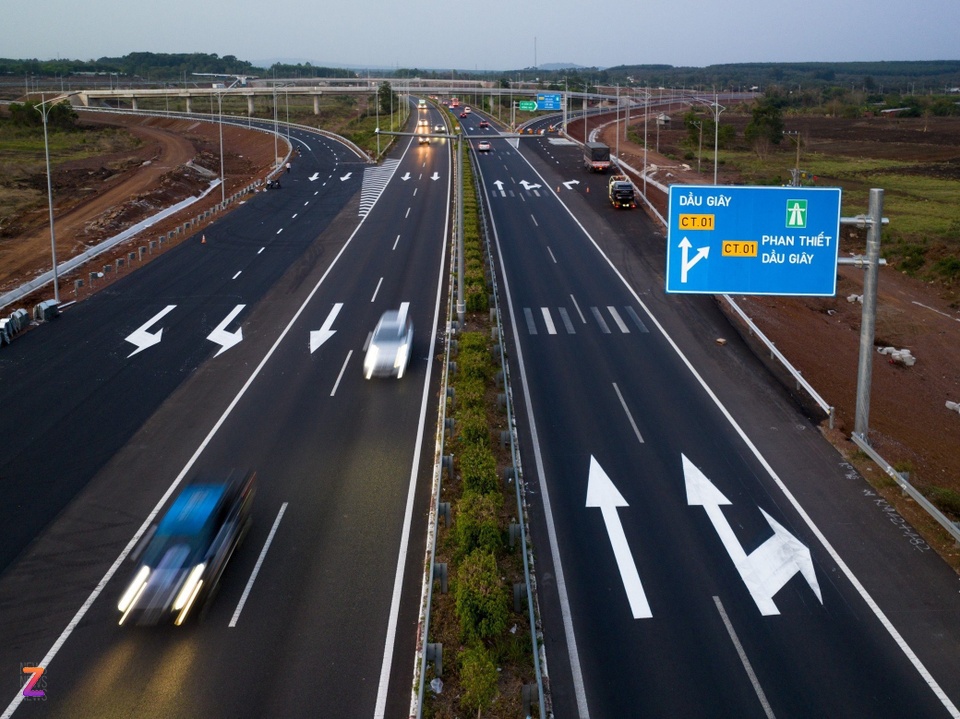
|
|
Photo by: Chi Hung. |
Lane changing is an essential maneuver when driving on expressways, especially when overtaking, entering, or exiting at interchanges.
According to point g, clause 5, Article 6 of Decree 168, drivers who change lanes without using turn signals or failing to adhere to the regulation of “only changing to the immediately adjacent lane each time” will be fined VND 4-6 million.
Clause 5, Article 6 of Decree 168 also stipulates a fine of VND 4-6 million for non-compliance with regulations when entering or exiting expressways, as outlined in point d.
Point a, clause 16, Article 6 of the same decree mandates additional penalties, deducting 2 points from the driver’s license for violations mentioned in point d and point g, clause 5, Article 6.
Drivers are advised to follow lane change regulations, especially when entering or exiting expressways, to avoid fines and license point deductions.
| |
|
Turn signals are necessary when changing lanes on expressways. Illustrative image by: Quỳnh Danh. |
According to the National Technical Regulation on Road Signs QCVN 41:2024 issued by the Ministry of Transport, the 2.1 marking with a single, dashed white line, 15 cm in width, is used to separate lanes in the same direction. Vehicles are allowed to cross this line when changing lanes.
On Vietnamese expressways, the 2.1 marking is used to separate lanes in each direction. While drivers can cross this line when changing lanes, it is imperative to use turn signals beforehand to avoid fines for not signaling lane changes.
At interchanges, entry and exit points of expressways, the 3.2 and 3.3 markings are used in combination. These markings are used to separate the main lane from the acceleration or deceleration lane, or as channelizing lines in the weaving area.
As per the QCVN 41:2024, the 3.2 marking is a solid white line, 45 cm in width, and vehicles are not permitted to cross it. In contrast, the 3.3 marking is a dashed white line, also 45 cm in width, and vehicles are allowed to cross it when entering or exiting the expressway at interchanges.
Drivers should pay attention to these markings when entering or exiting expressways, ensuring they do not cross the solid 3.2 line and only use the dashed 3.3 line when changing lanes in these areas.
|
Description of the arrangement of the dashed 3.3 and solid 3.2 lines at expressway entrances and exits. |
The 2024 Law on Road Traffic Order and Safety, in Article 25, stipulates that before entering the expressway lane, drivers must signal their intention, yield to vehicles already on the expressway, and ensure a safe distance from vehicles behind. If there is an acceleration lane, drivers must use it before merging onto the expressway.
When exiting the expressway, drivers should observe the appropriate signage and gradually move to the right lane. If there is a deceleration lane, they should use it before exiting.
Failure to comply with these regulations will result in a fine of VND 4-6 million and a deduction of 2 points from the driver’s license, as previously mentioned.
Recommended Reads for Your Journey
Our Automotive section offers a diverse range of captivating book titles to accompany you on your travels. These books provide interesting insights and engaging narratives to enrich your downtime during those much-needed breaks.







